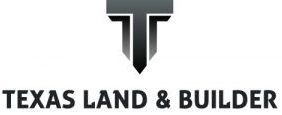As the demand for energy-efficient homes grows, many builders and homeowners are incorporating advanced technologies and materials designed to reduce energy consumption and improve insulation. While building an energy-efficient home has clear benefits—such as lower utility bills and a reduced carbon footprint—it doesn’t always guarantee longevity or durability. In fact, some energy-efficient materials and technologies, though impressive in their energy-saving potential, come with trade-offs that can affect the long-term durability of a home.
Here’s why energy-efficient home building does not always equate to longevity, highlighting concerns such as the structural weaknesses of certain materials, unproven technologies, and the additional maintenance required.
1. Foam Sheathing: Energy Efficiency at the Cost of Strength
One of the most common materials used in energy-efficient homes is foam sheathing, which provides excellent insulation by creating a thermal barrier. Foam sheathing—made from materials such as polystyrene, polyurethane, or polyisocyanurate—is lightweight and highly effective at reducing heat loss. However, this insulation comes at the cost of structural strength.
Unlike traditional materials like plywood or oriented strand board (OSB), foam sheathing does not contribute to the structural integrity of a house. Traditional sheathing materials add rigidity to walls and roofs, helping them withstand wind, pressure, and impact. Foam, on the other hand, is relatively weak and can be easily damaged, especially if exposed to the elements. This lack of strength can leave homes more vulnerable to damage from storms, heavy winds, and other environmental stressors, potentially shortening the lifespan of the building.
To compensate for the structural weakness of foam sheathing, builders often rely on additional reinforcements, such as metal bracing or stronger framing techniques. While this can mitigate some risks, it adds complexity and cost to the construction process and may not always be executed to the necessary standard. Over time, foam sheathing can also degrade, leading to performance loss and requiring costly repairs or replacements.
2. Unproven New Technologies
Many energy-efficient building technologies are relatively new and have not stood the test of time. Innovations such as advanced air sealing techniques, smart home systems, and high-tech HVAC systems are designed to maximize energy efficiency but may come with long-term risks that are not yet fully understood.
For example, sealed building envelopes that make homes airtight can lead to poor indoor air quality if ventilation systems are not properly maintained or installed. While these techniques help reduce energy loss, the potential for moisture buildup increases, leading to problems like mold growth, wood rot, and deterioration of building materials. These moisture-related issues can significantly shorten a home’s lifespan if not carefully managed.
Additionally, new technologies like smart thermostats, energy-efficient appliances, and solar panel systems may require frequent software updates, maintenance, or part replacements to function correctly. If these systems fail or become obsolete, homeowners may face significant costs to replace or upgrade them, adding unexpected expenses that affect the long-term value and durability of the home.
3. Increased Maintenance Requirements
Energy-efficient homes often require additional maintenance to ensure their energy-saving systems continue to function properly over the long term. For instance, high-performance windows that provide superior insulation are often more complex than traditional windows. They may feature multiple panes of glass, low-emissivity coatings, and gas fills such as argon or krypton. While these windows offer excellent energy efficiency, they can be more prone to seal failures, condensation between panes, and difficulty with repairs. Replacing high-performance windows can be costly, and homeowners may need to budget for periodic maintenance.
Another example is mechanical ventilation systems, which are crucial for maintaining good air quality in airtight, energy-efficient homes. Systems such as heat recovery ventilators (HRVs) or energy recovery ventilators (ERVs) are designed to expel stale air while bringing in fresh air, all while minimizing energy loss. However, these systems require regular cleaning and filter replacement to function effectively. Neglecting this maintenance can lead to poor air quality, reduced energy efficiency, and even system breakdowns, which can shorten the home’s life and increase operational costs.
Similarly, solar panels and battery storage systems are often marketed as long-term investments that reduce energy costs. While this is true in many cases, the lifespan of these systems can vary, and they require routine cleaning, monitoring, and eventual replacement of parts like inverters. Without proper care, these energy-efficient upgrades can degrade over time, resulting in decreased performance and additional expenses.
4. The Longevity Trade-Off
Traditional building materials and methods, such as brick, stone, and wood framing, have proven their durability over centuries. While not always the most energy-efficient, these materials are time-tested and often require less maintenance to last for decades, if not centuries.
In contrast, many energy-efficient products and technologies are relatively new and may not have the same long-term track record. Fiberglass insulation, engineered wood products, and synthetic materials like vinyl siding or composite roofing can offer great thermal performance and low maintenance in the short term, but their lifespan and durability compared to traditional materials are less certain. These materials may also break down more quickly under UV exposure or environmental stress, which could compromise a home’s longevity.
Conclusion
While building an energy-efficient home is a smart choice for reducing utility costs and minimizing environmental impact, it doesn’t always guarantee that the home will last longer. Materials like foam sheathing, while excellent for insulation, are structurally weaker and may require additional reinforcements. New technologies, though innovative, come with their own set of maintenance challenges and risks. Moreover, energy-efficient systems often need regular upkeep to maintain their performance, adding to long-term costs and responsibilities for homeowners.
Ultimately, achieving both energy efficiency and longevity requires careful planning, a balance of traditional and modern building methods, and a commitment to regular maintenance. Homeowners should work closely with knowledgeable builders and architects who understand how to integrate energy-saving features without compromising the structural integrity or long-term durability of the home.
